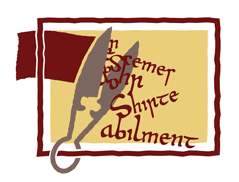
Project Aims
The Project investigated the complex relationships between vocabulary, artefact and image. Also included in the database were definitions in modern English of medieval technical processes and artefacts Read more ...

The Project investigated the complex relationships between vocabulary, artefact and image. Also included in the database were definitions in modern English of medieval technical processes and artefacts Read more ...
Cloth and clothing have been integral to life for every person since civilization began. In the Middle Ages dress was an identifier of occupation, status, gender and ethnicity; textiles ranged through opulent, symbolic, utilitarian and recycled. Cloth production and international trade constituted a major sector of the economy of medieval Britain. Read more
Evidence for medieval textiles and clothing is sought in diverse academic disciplines: archaeology, archaeological textiles, art history, economic history, literature, languages. Read more
The vocabulary of the various languages spoken and written in the British Isles is documented in specialist dictionaries.
At the centre of the Lexis Project was the assembly and examination of textiles/clothing lexis in the early languages of Britain, investigating the genesis and subsequent
development of vocabulary.
Read more
This website will look much better in a web browser that supports web standards, but it is accessible to any browser or Internet device.